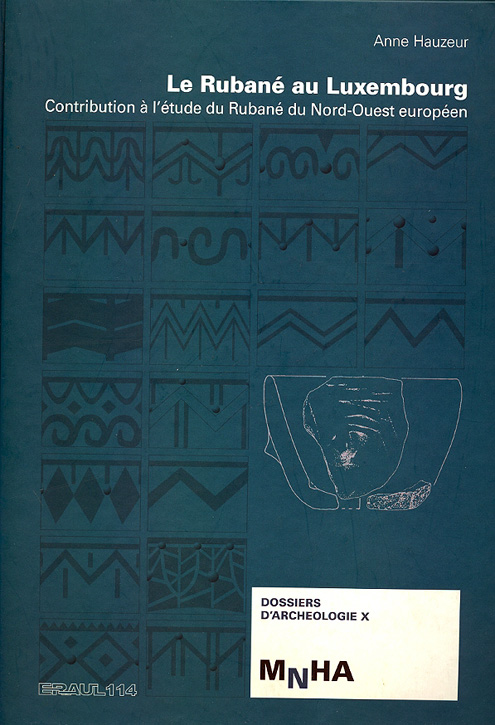Le Rubané au Luxembourg
36,00 €
Contribution à l’étude du Rubané du Nord-Ouest européen
par Anne HAUZEUR
L’occupation rubanée au Grand-Duché de Luxembourg se situe dans le bassin de la moyenne vallée de la Moselle et fait partie de la province stylistique du Rubané du Nord-Ouest. Les sites sont surtout installés sur la basse terrasse mosellane et sur le plateau du Gutland. Quatre d’entre eux ont été fouillés et ont révélé des occupations étalées sur l’ensemble du Rubané récent (IIa-IId), principalement au IIc-IId. Division interne bipartite et présence d’une tranchée de fondation caractérisent les maisons, essentiellement de plan rectangulaire. L’organisation interne des tierces apparaît souvent déstructurée. L’outillage lithique est en majorité importé de la région mosane et atteste de nombreux cycles de remploi. Il est dominé par les pièces esquillées et les armatures. Celles-ci sont souvent asymétriques ou latéralisée à gauche. Le style décoratif de la céramique s’apparente à celui du Rhin moyen, avec un développement de la technique pivotante au peigne à dent multiple et l’utilisation de la bande « vide » en angle associée à un motif annexe. Il témoigne aussi d’affinités avec le style de Leihgestern, la vallée du Neckar et très peu avec le nord du Rubané du Nord-Ouest et le Rubané du Sud-Ouest. De rares motifs décoratifs s’inspirant d’une thématique utilisée dans la culture de Blicquy – Villeneuve-Saint-Germain ou dans le Hinkelstein, ainsi que quelques vases de la Céramique du Limbourg et de la céramique d’accompagnement, illustrent les relations avec les autres groupes et les cultures contemporaines.
The Linear Pottery Culture peopled the Great-Duchy of Luxembourg. It is situated in the Middle Mosel valley and forms a part of the North-West Linear Pottery Culture. The great majority of the settlements occurs on the lower terraces of the Mosel river and on the plateau of the Gutland. Four sites have been excavated and revealed assemblages belonging to the Late LPC (IIa-IId), mainly to IIc-IId. The internal bipartite division and the presence of a foundation trench feature the house plans, which are mostly rectangular. The inside organisation of the postholes’rows often appears deconstructed. The greater part of the imported lithic assemblages to the Mosel settlements evidence numerous cycles of reuse. Splinters and arrowheads points dominate. The latter are often either asymmetrical or retouched on their left lateral edge. The pottery decoration pertains to the Middle Rhine stylistic province. It is characterised by the increasing of the pivoting multiple teeth comb technique and the use of angular « empty » band in association with a secondary motif. It gives also evidence of affinities with the Leihgestern group, the Neckar valley, and very few parallels with the North of the North-West LPC and the South-West LPC. Some rare decoration motifs are inspired by characteristic patterns from the Blicquy – Villeneuve-Saint-Germain culture or Hinkelstein. Yet, there are few pots that belong to the Limbourg Pottery and the « Begleitkeramik » illustrating relations with other contemporaneous groups and cultures.
Informations complémentaires
| Poids | 1500 g |
|---|---|
| Tomaison | ERAUL 114 |
| Année | 2006 |
| Pages | 669 |



